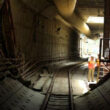10+ Must To Consider Points For Foundation Engineer
A wise engineer once said “A structure is no stronger than its connections”. Although this statement usually invokes images of connections between individual structural members. It also applies to those between a structure and the ground that supports it. These connections are known as its foundations. Even the ancient builders know that the most carefully design structures can fail if they are not supported by suitable foundations. The Tower of Pisa in Italy reminds us of this truth.
Buildings impart their weight and other loads, such as wind or seismic forces, onto their foundations. These loads must be safely and economically transmitted into the ground. Large buildings require extensive foundation systems that represent a significant part of the total construction cost.
In the design process of foundation one of the first steps is to define the performance requirements. What functions do we expect the final product to accomplish? What are the appropriate design criteria? What constitutes acceptable performance, and what would be unacceptable?
After said that; let’s talk in brief about some important key / major points to be remembered by Foundation Engineer;
1. The foundation engineer must determine the necessary performance requirements before designing a foundation.
2. Foundations must support various types of structural loads. These can include normal, shear, moment, and/or torsion loads. The magnitude and direction of these loads may vary during the life of the structure.
3. Loads also are classified according to their sources. These include dead loads, live loads, wind loads, earthquake loads, and several others.
4. Design loads may be expressed using either the allowable stress design (ASD) or the load and resistance factor design (LRFD) method. It is important to know which method is being used, because the design computation must be performed accordingly.
5. Strength requirements are those that are intended to avoid catastrophic failure. There are two kinds; geotechnical strength requirements and structural strength requirements.
6. Serviceability requirements are those intended to produce foundations that perform well when subjected to the service loads. These requirements include settlement, heave, tile, lateral movement, vibration and durability.
7. Settlement is often the most important serviceability requirement. The response of structures to settlements is complex, so we simplify the problem by considering two types of settlement; total settlement and differential settlement. We assign maximum allowable values for each, and then design the foundation to satisfy these requirements.
8. Durability is another important serviceability requirement. Foundations must be able to resist the various corrosive and deteriorating agents in soil and water.
9. Foundations must be buildable; so design engineers need to have at least a rudimentary understanding of construction methods and equipment.
10. Foundation design must be economical. Although conservatism is appropriate, excessively conservative designs can be too needlessly expensive to build.


















